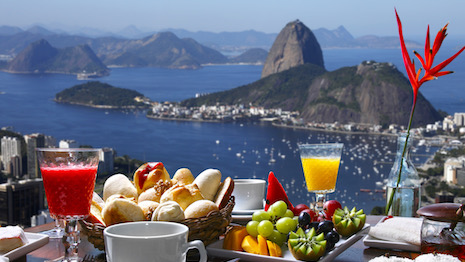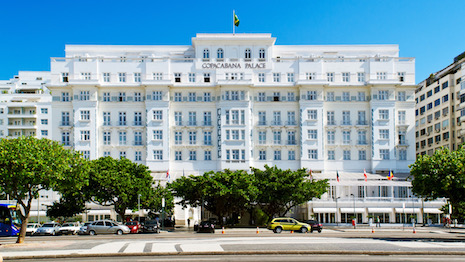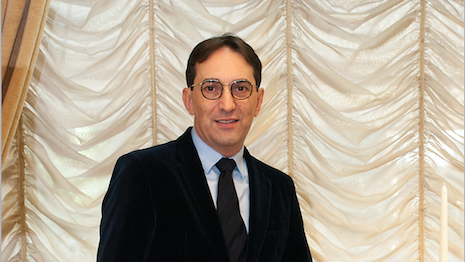
Brio in Rio
By Paulo Roberto Chiele
Brazil’s boom years have long gone. And all the euphoria associated with the 2016 Olympic Games has not much helped improve business enthusiasm. Corruption scandals continue to surface every week and a profound political change is taking place.
Nobody knows exactly what is going to happen in Brazil as far as politics is concerned. But one is certain: luxury consumers are cautious.
Sign of things
With disadvantaged exchange rates, Brazilians are traveling less abroad and spending more in the domestic market.
Brazilians spent almost $18 billion abroad in 2015, according to the Brazilian Central Bank.
Luxury brands are highly concentrated in Sao Paulo, Rio de Janeiro and Brasilia, but wealthy families and high-net-worth individuals are spread all over the country, representing almost $4 trillion of South America’s holdings.
 The Copacabana Palace is a landmark Rio de Janeiro hotel that is part of the Belmond hospitality group comprising 46 properties in 22 countries
The Copacabana Palace is a landmark Rio de Janeiro hotel that is part of the Belmond hospitality group comprising 46 properties in 22 countries
Most of the rich people in Brazil are involved with agricultural activities and manufacturing of consumer goods such as shoes, housewares and clothing.
There is space for growth in Brazil, and companies must learn how to identify these opportunities and reach these highly motivated consumers.
Brazilians love foreign brands. And a great advantage is that they do not mind showing them off.
The Louis Vuitton logo is still a sign for people to show they belong to the elite class. Brazilians also like to buy in installments and companies that offer these possibilities are much better off.
Because of the continental dimension of the country, online sales for luxury goods is growing fast and online sites such Farfetch are doing extremely well.
Brand stand
Brazilians like to see and be seen. In-store events where celebrities show up is popular and an excellent way to promote new brands.
Brazilians do not pay much attention to the market segmentation of consumers where millennials, or Generations X and Z would have different consuming behavior.
Traditional brands such as Armani, Prada, Hermes, Gucci and Channel are still preferred by the majority of luxury consumers.
U.S. brands can have excellent opportunities in the Brazilian market because they are seen as cool and innovative and represent a new generation: young and Fresh, not necessarily millenials, or X and Z.
EVERY AUTHENTIC brand that will pay attention to personalization and identify its tribes will be able to generate business and achieve growth in Brazil.
 Paulo Roberto Chiele is CEO of PRC Consultoria em Luxo
Paulo Roberto Chiele is CEO of PRC Consultoria em Luxo
Paulo Roberto Chiele is CEO of PRC Consultoria em Luxo, and author of “Luxury Branding: Building of Brands for the Luxury Sector – Brazil.” He is based in Porto Alegre, Rio Grande do Sul, Brazil. Reach him at [email protected].
 Brio in Rio
Brio in Rio
 The Copacabana Palace is a landmark Rio de Janeiro hotel that is part of the Belmond hospitality group comprising 46 properties in 22 countries
The Copacabana Palace is a landmark Rio de Janeiro hotel that is part of the Belmond hospitality group comprising 46 properties in 22 countries Paulo Roberto Chiele is CEO of PRC Consultoria em Luxo
Paulo Roberto Chiele is CEO of PRC Consultoria em Luxo